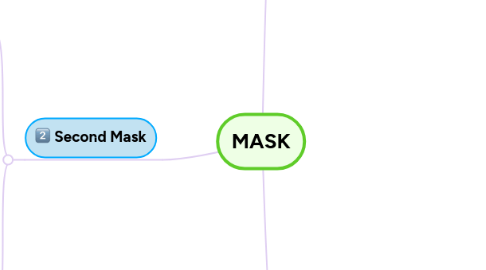
1. Second Mask
1.1. Rite of Passage
1.1.1. - In what locales, time periods, cultures and societies are masks used for rites of passage to mark birth, adolescence, age & rank, and death?
1.1.2. - Who creates the mask, wears the mask or witnesses the mask performed?
1.1.3. - What are the ceremonies or rituals that use these types of masks and how does that reflect the given culture, environment and values?
1.1.4. - For passing through the threshold, are there real/suggested dangers and uncertainties?
1.1.5. What do the masks embody or symbolize? Are they also representations of deities or natural forces? How and when are they made?
1.1.6. What is my rite of passage? And how does that reflect my upbringing and lived experinces thus far?
1.2. Research
1.2.1. King, J. C. H. Portrait Masks from the Northwest Coast of America. Thames and Hudson, 1979.
1.2.2. Pernet, Henry. Ritual Masks: Deceptions and Revelations. Translated by Laura Grillo , University of Southern Carolina Press, 1992.
1.2.2.1. (Death) Chapters 4 & 5
1.2.3. “Joe David: Spirit of the Mask (Full Documentary) c. 1982.” YouTube, Kensington Communications, 27 Jan. 2014, youtu.be/A-a8uuLUQio.
1.2.4. Nunley, John W., and Cara Mccarty. Masks Faces of Culture: Abrams in Association with the Saint Louis Art Museum, 1999.
1.2.4.1. Chapter 2
2. First Mask
2.1. Ancestors & Deities
2.1.1. - In what locales, time periods, cultures and contexts are deity masks created and used?
2.1.2. - What masks are used for religious purposes today? Is it possible to discern colonial influences from the aboriginal spiritualist practice?
2.1.3. - What deities/ancestors/god(s) do I want to venerate? Why? Will the mask embody this deity?
2.1.4. How does the mask function in shaman rituals, religious ceremony and how will I use my own mask in dance/performance/ritual?
2.2. Research
2.2.1. Cordry, Donald. Mexican Masks. University of Texas Press, 1980.
2.2.2. Wright, Robin Kathleen, and Kathryn Bunn-Marcuse. In the Spirit of the Ancestors Contemporary Northwest Coast Art at the Burke Museum. Bill Holm Center for the Study of Northwest Coast Art, Burke Museum, 2013.
2.2.3. Nunley, John W., and Cara Mccarty. Masks Faces of Culture: Abrams in Association with the Saint Louis Art Museum, 1999.
2.2.3.1. Chapter 2
3. Third Mask
3.1. Animals, Plants and Nature
3.1.1. Which animal(s) will I choose to embody and why? What semiotic/cultural memories are associated with these animals?
3.1.2. How will I use this mask in performance? What story do I want to tell? And why use comedy and humor?
3.1.3. How will this mask incorporate nature as part of the mask and why?
3.1.4. Which cultures and societies use the animal/plant/nature theme regularly? Who makes them and for what event or purpose?
3.2. Research
3.2.1. Nunley, John W., and Cara Mccarty. Masks Faces of Culture: Abrams in Association with the Saint Louis Art Museum, 1999.
3.2.2. King, J. C. H. Portrait Masks from the Northwest Coast of America. Thames and Hudson, 1979.
3.2.3. Cordry, Donald. Mexican Masks. University of Texas Press, 1980.
3.2.4. Holm, Bill. Crooked Beak of Heaven: Masks and Other Ceremonial Art of the Northwest Coast. University of Washington Press, 1972

